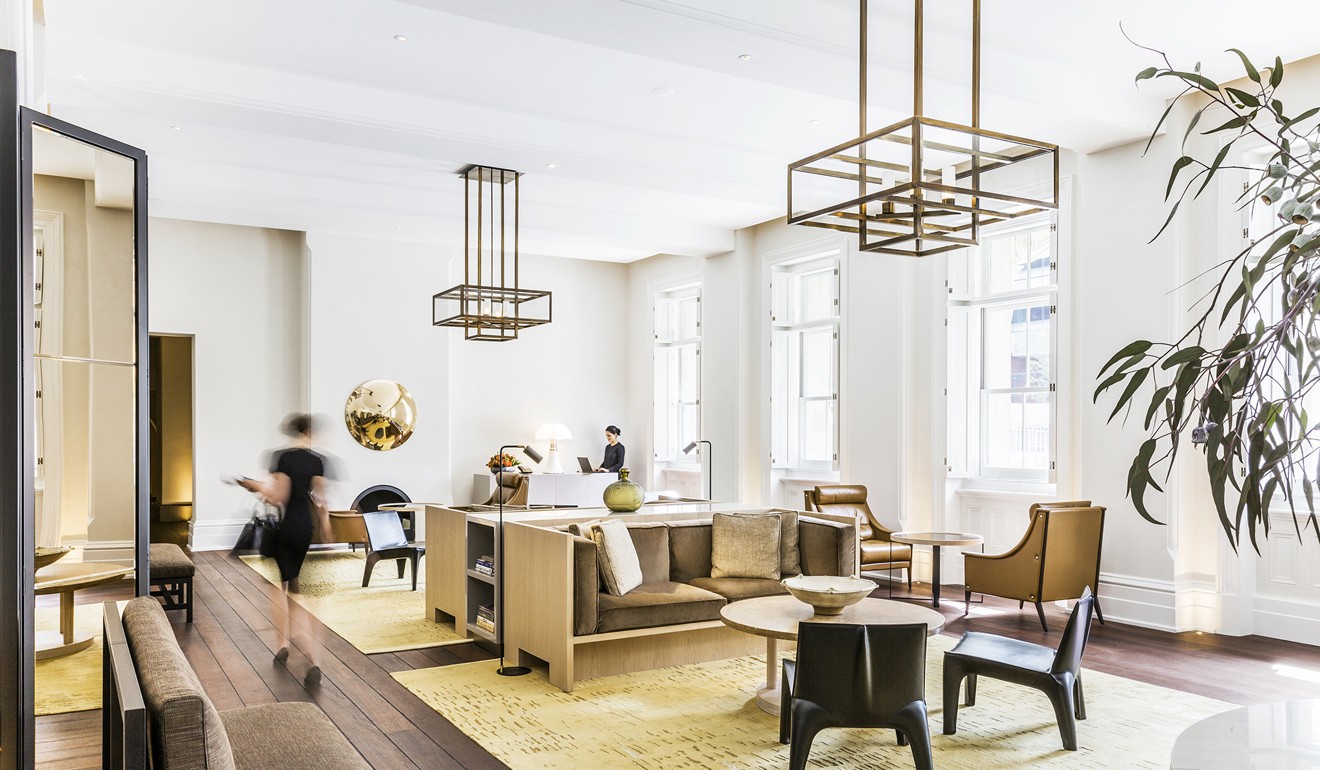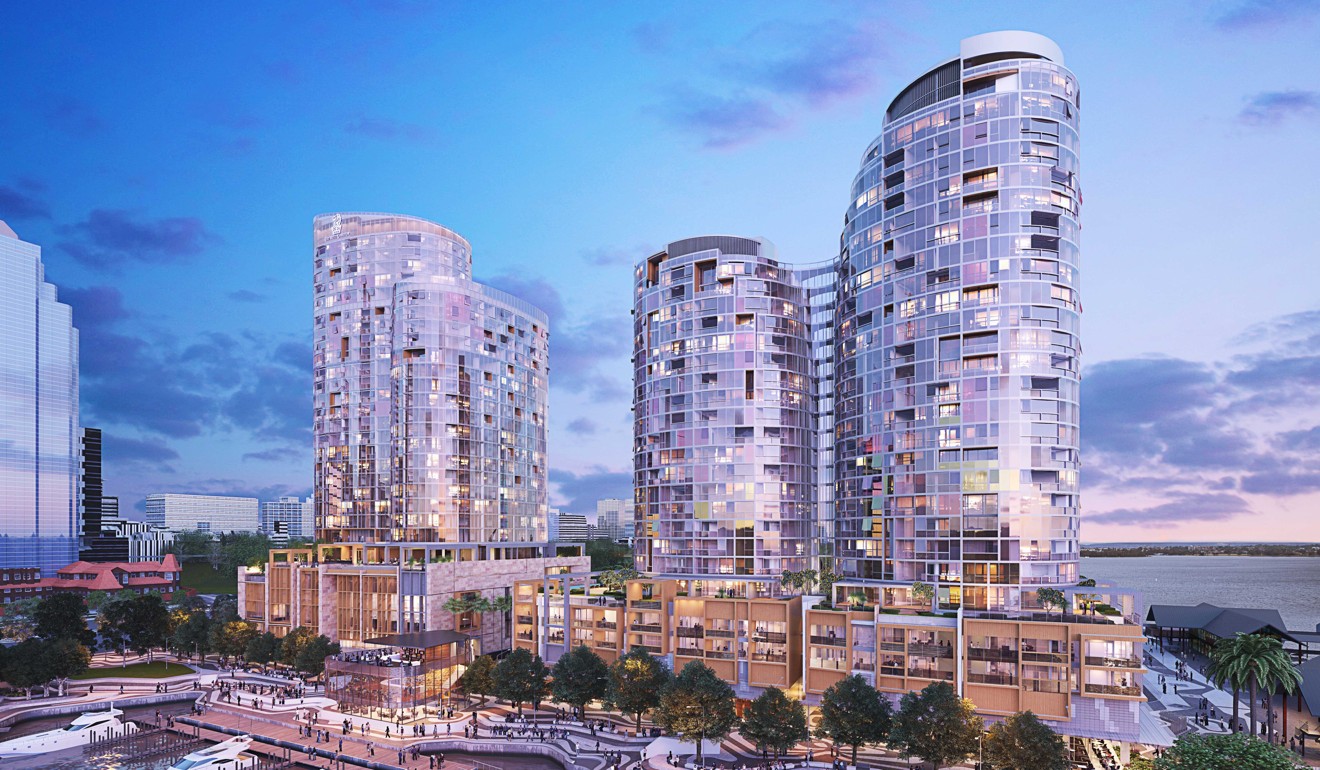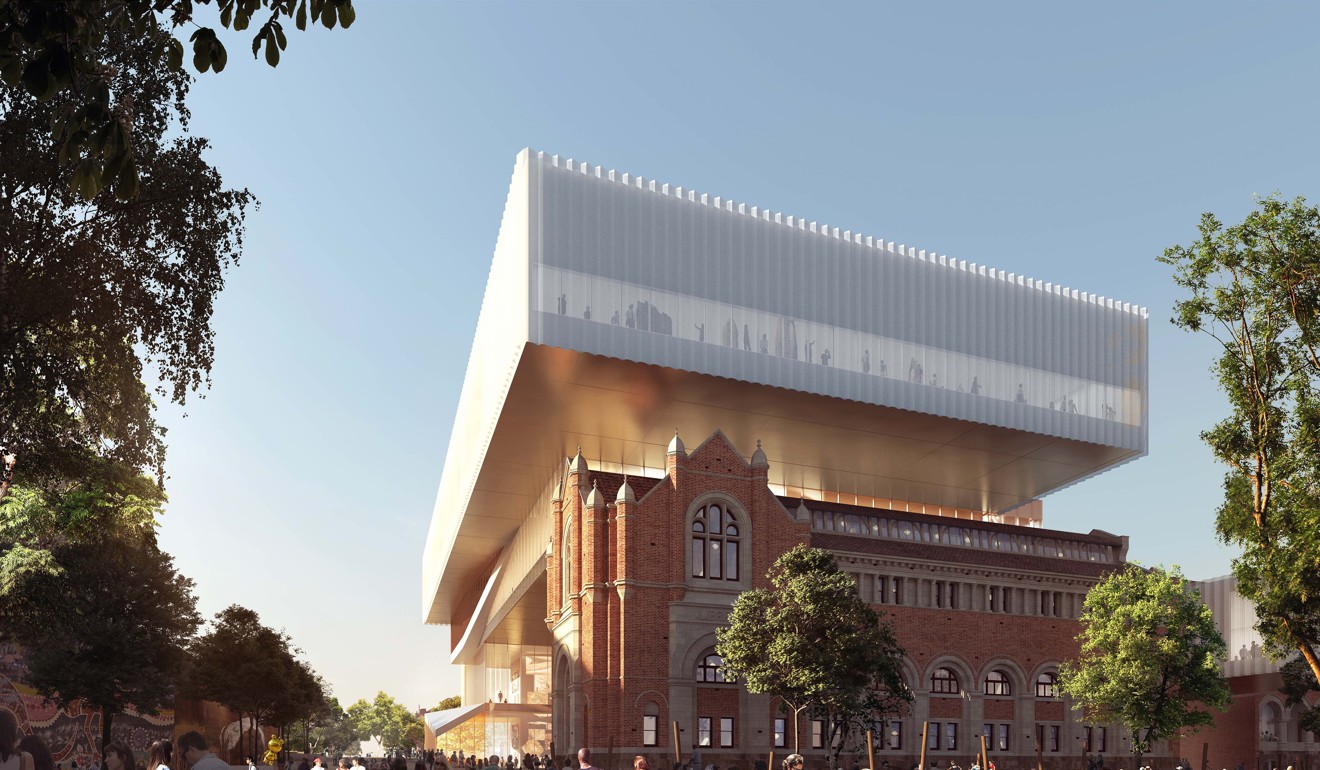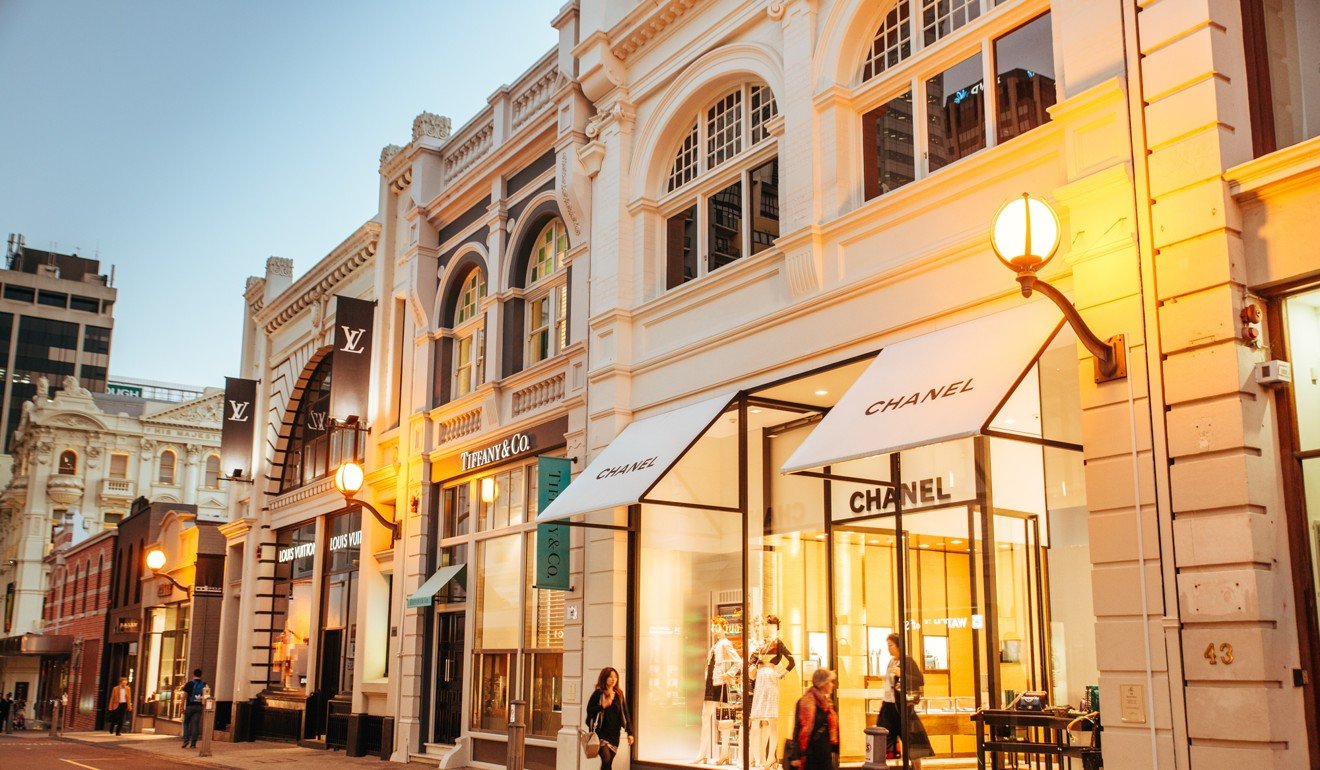
Perth back on radar of luxury retailers with new mining boom in Western Australia forecast
- City had a taste of luxury living during last mining boom, and has seen money pour into new hotels, shopping centres and infrastructure
- Macau casino mogul Stanley Ho’s daughter Laurinda Ho is among the investors to have opened upscale hotels
In 2008, halfway through the last Western Australian mining boom, sales staff at Louis Vuitton’s flagship store in Perth started keeping packets of Wet Ones at the boutique’s entrance.
According to former Louis Vuitton Oceania chief executive officer Philip Corne, who regaled local media with the story at the time, the disposable wipes were intended for all the cashed-up workers coming into the store straight off mining sites, covered in dust.
During the boom, the world prices of Australia’s mining exports more than tripled and real per capita Australian household disposable income rose by 13 per cent, according to the Reserve Bank of Australia. At the boom’s peak in 2012, an estimated 67,000 FIFO, or ‘fly-in, fly-out’ mining workers, often on six-figure salaries, became notorious for boosting sales in Western Australia of luxury goods, notably prestige cars, boats and jet skis.
At the time, Western Australia was Australia’s fastest-growing state. In July 2013, Perth, the state’s capital and home to 79 per cent of its population, was named the most expensive city in the southern hemisphere by Numbeo, a cost-of-living data aggregator.
Not surprisingly, this period saw a spate of luxury brand store openings in the city, creating in King Street Perth’s first luxury retail precinct. Today King Street is home to stores of Gucci, Tiffany & Co, Chanel, Prada, Miu Miu, Watches of Switzerland, Georg Jensen, and Australian fine jewellery retailers Hardy Brothers, Linneys and Kailis.
“[The boom] was unbelievable. For about five or six years it just grew and grew and grew – people coming in, spending like there was no tomorrow, A$20,000 to A$30,000 [at a time],” says Victor Tana, the owner of 123-year-old Perth gentleman’s outfitter Parker & Co, which offers made-to-measure suiting from Ermenegildo Zegna, Brioni, Kiton, Del Siena and Pal Zileri.

“Now, of course, everything’s gone backwards,” he says of the state’s recession of the past four years, during which housing prices have fallen by 13 per cent.
On Australia’s east coast, five-figure transactions are common at luxury goods boutiques and department store beauty counters, notably in Sydney and Melbourne. Both places, to which record numbers of international tourists, students and migrants have flocked in recent years, have surpassed Perth as the most expensive cities in Australia.

According to IBISWorld, inbound tourists – notably from Asia – have fuelled 30 per cent of Australia’s A$2.1 billion (US$1.55 billion) luxury goods market, which has seen annual compound growth of 10.2 per cent over the past five years.
Things are looking up now for the wild west, as Western Australia is often called. Six years after the end of the first boom, the state is by all accounts on the cusp of another, with some A$75 billion committed to new projects in the resources sector.
This time around Perth will be ready for an influx of workers, with the Western Australian and federal governments having recently committed A$5.4 billion to infrastructure projects in the state. On top of that, there has been billions of dollars of private investment in more than 40 large-scale urban renewal and apartment projects, as well as a flurry of hotel and retail developments.
In September 2017, the Western Australian government announced a A$425 million investment in the tourism sector over the next five years. And not before time, many would argue, with Western Australia the only Australian state to see a decline in tourist numbers in the year to June 2018, according to Tourism Research Australia data.

In March Perth became the launch pad for Australia’s first direct-to-Europe flight. The start of Qantas’ 17 hour Perth-London service has already earned recognition for the region, with both Condé Nast Traveller and the Association of British Travel Agents last month listing Perth and Western Australia as top holiday destinations for 2019.
Qantas is expected to launch a Perth-Paris flight in 2019, and Japan’s All Nippon Airways is about to announce daily direct flights between Perth and Tokyo will start in 2019.
Around 30 hotels have been built or redeveloped in the city, with the luxury end of the market particularly well serviced.

Como The Treasury, by Christina Ong’s Como Hotels and Resorts, opened in October 2015 as the star tenant of the A$580 million Cathedral Square development, a cluster of 19th-century buildings. Designed by Perth architect Kerry Hill, who died in August, Como The Treasury features 48 rooms and suites and has added a cluster of new restaurants to the city’s hospitality scene, which exploded after the mining boom.
Como The Treasury was voted the best hotel in Australia and New Zealand and named the second best hotel in the world in Condé Nast Traveller’s Readers Choice Awards 2016.
December 2016 saw the arrival of Crown Resorts’ A$645 million Crown Towers, the most expensive hotel built in Australia and the latest addition to the A$1.7 billion Crown Perth integrated resort development on the site of the former Burswood Casino.
A subsidiary of Hong Kong's UNIR Group spent US$70 million on the InterContinental Perth, which opened in October 2017. According to a family representative, the development was the first hotel project of Laurinda Ho, the 27-year-old daughter of casino mogul Stanley Ho Hung-sun and his third wife, Ina Chan. Laurinda Ho, an executive director of UNIR’s Australian subsidiary, is depicted in a mural by Perth artist Daek Williams at the hotel’s Graffiti On King cafe.
The A$500 million Westin Perth and Hibernian Place development opened in April this year, and 2019 will see the opening of the first Ritz Carlton in Australia in a decade.
The latter is part of the A$500 million The Towers at Elizabeth Quay development by the Hong Kong-based Far East Consortium, itself part of the A$2.6 billion Elizabeth Quay waterfront renewal project.
Other developments include the A$1.6 billion, 60,000-seat Optus Stadium, which opened in January and hosted catwalk shows during September’s Telstra Perth Fashion Festival. The A$428 million New Museum for Western Australia, designed by Melbourne-based Hassell and Rem Koolhaas’ OMA, is due to open in 2020.

“It was spectacular,” says Hassell director Peter Lee of Perth’s construction bonanza in recent years, which he called unprecedented.
Hassell has been involved with developments in the state valued at more than A$6 billion, including Brookfield Place, the Optus Stadium, Crown Towers, five hospitals and two yet-to-open projects at Elizabeth Quay.
“The place has grown up, I suppose,” Lee says. “It was a catch-up. Perth never quite got around to doing things, so then everything got built at once and we were really lucky to have done most of it.”

In spite of the flowering of King Street and the handful of luxury stores that have opened at Crown Towers, luxury retailing in Perth is still in its infancy; the international brands that have beaten a path to Australia’s east coast cities since 2011 are yet to make a serious dent on Perth.
According to Tessa Bontempo, whose family company redeveloped King Street into a luxury precinct and owns a half-dozen buildings there, the strip is on the verge of a renaissance after the downturn in Western Australia, which saw high vacancy rates. The company is in discussions with a number of luxury brands keen to open in Perth in the next two years, she says.
With A$5 billion also being spent on new and upgraded shopping centres in the state, there will be no shortage of space to lease.
The flurry of retail developments includes a A$1 billion investment by Scentre Group, the owner of Westfield malls in Australia and New Zealand, in three properties in suburban Perth; upmarket Australian department store chain David Jones is opening a store at each of them.
AMP Capital Shopping Centres, meanwhile, is spending A$1.4 billion to upgrade its Garden City and Karrinyup centres.
Representatives for David Jones, Westfield and AMP Capital declined to comment on leasing discussions with international brands.

“Perth lacked a lot of things in the boom. Hotels was one of them and obviously we’ve caught up on that,” says Scott Nugent, AMP Capital’s Western Australia divisional development manager. “With retail there were lots of old planning laws that [stopped] the shopping centres growing to their full potential.” Shopping centres hadn’t been redeveloped for 20 years, he says.
Nugent adds: “Perth is far more exciting now than it’s ever been and I think it will look completely different in 10 years time as well.”
Getting there
Cathay Pacific and Qantas offer direct flights between Hong Kong and Perth
The writer travelled to Perth as a guest of the Telstra Perth Fashion Festival

